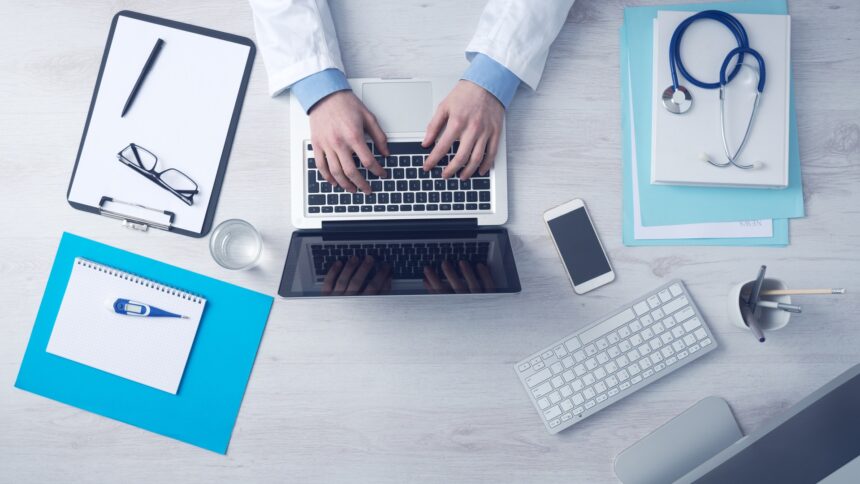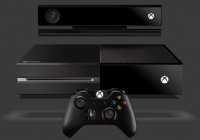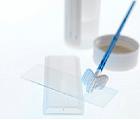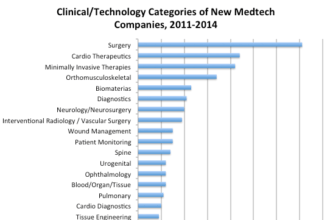Digital technologies make the healthcare field more stable and efficient, so medical innovations gain the lead in the healthcare sector. The Internet of Things takes one of the first positions in the list of healthcare innovations, that is why it cannot be ignored. When using IoT in healthcare, the combination of medical devices and properly built software drastically change medicine for the better.
Healthcare and IoT: the beginning of a collaboration
Healthcare sector gives various opportunities for hardware manufacturers and software development companies, and it is the main reason why the Internet of Things has become so popular. First, IoT gives a lot of advantages not only to doctors but also to patients, it makes health monitoring therapies faster and more accurate. IoT network helps medical staff detect any disease at an early stage and apply a relevant treatment.
It is worth noting that more than 50% of all medical establishments around the world already use IoT actively and successfully, the forecast has it that 90% of all medical establishments will use by 2020.
However, everybody should keep in mind that IoT network must be secured properly, otherwise, it can be hacked by malefactors. But we will speak about it a bit later.
How can IoT be used in healthcare?
Let’s note that IoT is focused on more personalized treatment to each patient and it should help increase trust towards doctors.
So what use cases of IoT are possible in the healthcare sector? Here they are:
Telemedicine. Using mobile devices, doctors and patients can make an appointment remotely without the necessity to go to the hospital every time when patients need professional consultation. Also, high-quality resolution and complaints patients have can help a doctor diagnose and prescribe a necessary treatment on a remote basis.
Wearable technology. Smartwatches, fitness trackers, and other sensors are not already something fantastic for today, so remote monitoring of health condition makes it possible for a doctor to know everything about his or her patient. How they feel, their heart rate, general condition and so on. And all information is sent in a real-time mode.
Personalized medicine. The Internet of Things makes it possible to find a personal treatment for each patient since all particularities of patient’s health will be considered, and a doctor will be able to prescribe a proper and successful treatment.
Equipment can be maintained remotely. Approved specialists can remotely contact wearable devices using IoT and fix it if something wrong or make special adjustments.
Paperwork will be eliminated. With the help of IoT, all medical cards and other medical documents can be recorded in digital form and doctors will need to spend much less time to find the document they need. Also, they will not need to write a pile of documents every day.
IoT strong sides: the main reasons to use it in healthcare
Now it is the time to speak more about specific advantages of IoT and why it should be used in healthcare.
Reduced costs
As we noted above, doctors can monitor patients’ health remotely with the help of special devices and custom software. Thus, patients don’t need to see a doctor every time they have a question, so they don’t pay for a consultation. In turn, doctors save their time when they don’t need to see a patient every day.
Improved treatment effect
If patients feel bad or some health fluctuations take part, medical devices will detect it and a signal will be sent to doctors immediately. Thus, doctors will be able to take timely actions and tell patients to take appropriate drugs. As a result, a doctor’s assistance will be on time and patient’s health won’t be damaged.
Everything is under control
In addition, when patients are constantly tested for different diseases, all analysis results will be sent directly to a doctor when they are completed. Thus, doctors will stay always tuned and he or she will keep in touch with a patient.
The wrong diagnosis becomes a myth
Predictive analytics, automated data processing, special algorithms lead to the reduction of possible wrong diagnosis, and doctors will use all data received to diagnose properly. It is a great benefit for patients.
IoT connects people
The Internet of Things will provide both parties with more accuracy and reliability, and it will lead to a higher trust towards doctors. Moreover, IoT makes it possible for patients to get a doctor’s assistance any time, so trust and loyalty grow.
Control over drugs
Doctors can control the taking of medicines by patients and see how patients keep up with the prescribed regimen. It is very important, so this control will help doctors know whether patients follow prescribed treatment or not.
Weak sides of IoT: when IoT can damage healthcare
Unfortunately, there is always a fly in the ointment. So specific pitfalls exist in IoT and healthcare combination. We offer you to consider them to know all your enemies.
Security breach
You already know that IoT is the network of devices connected to each other that is used the appropriate software. And the privacy of any chain in this network can be breached by a hacker who will break it and make unwanted changes. This network contains personal information, and the privacy of a million people can be under threat. If a hacker will get access to the internal system, it can lead to very dangerous results.
Malware
Dangerous viruses and trojans can also damage the IoT system and become a reason of chaos inside the system. That is why it is highly important during healthcare application development to protect the app and add a few layers of security.
No immunity to failures
Even the most reliable system can be prone to accidental failures. The Internet of Things is not the exception. Specialists that maintain the functionality of the IoT system should always control how properly the works. If any failure occurs, it can also become a disaster for patients and doctors.
Conclusion
Drawing the line, we would like to note that IoT is a really powerful ecosystem and it takes a lot of time and resources to build it from scratch. But everything will be paid off after a few years of usage. If you plan to integrate IoT into your healthcare system, you should find reliable hardware manufacturers and hire high-skilled software development company if needed. As a rule, the hardware is available along with its custom software, but if you need to modify it – third-party software developer will be at your disposal.
Don’t forget to use backup servers, it will ensure that all personal information will always be unaffected. Have a good luck and follow the right road!








